The protests at US universities are about much more than Gaza and Israel
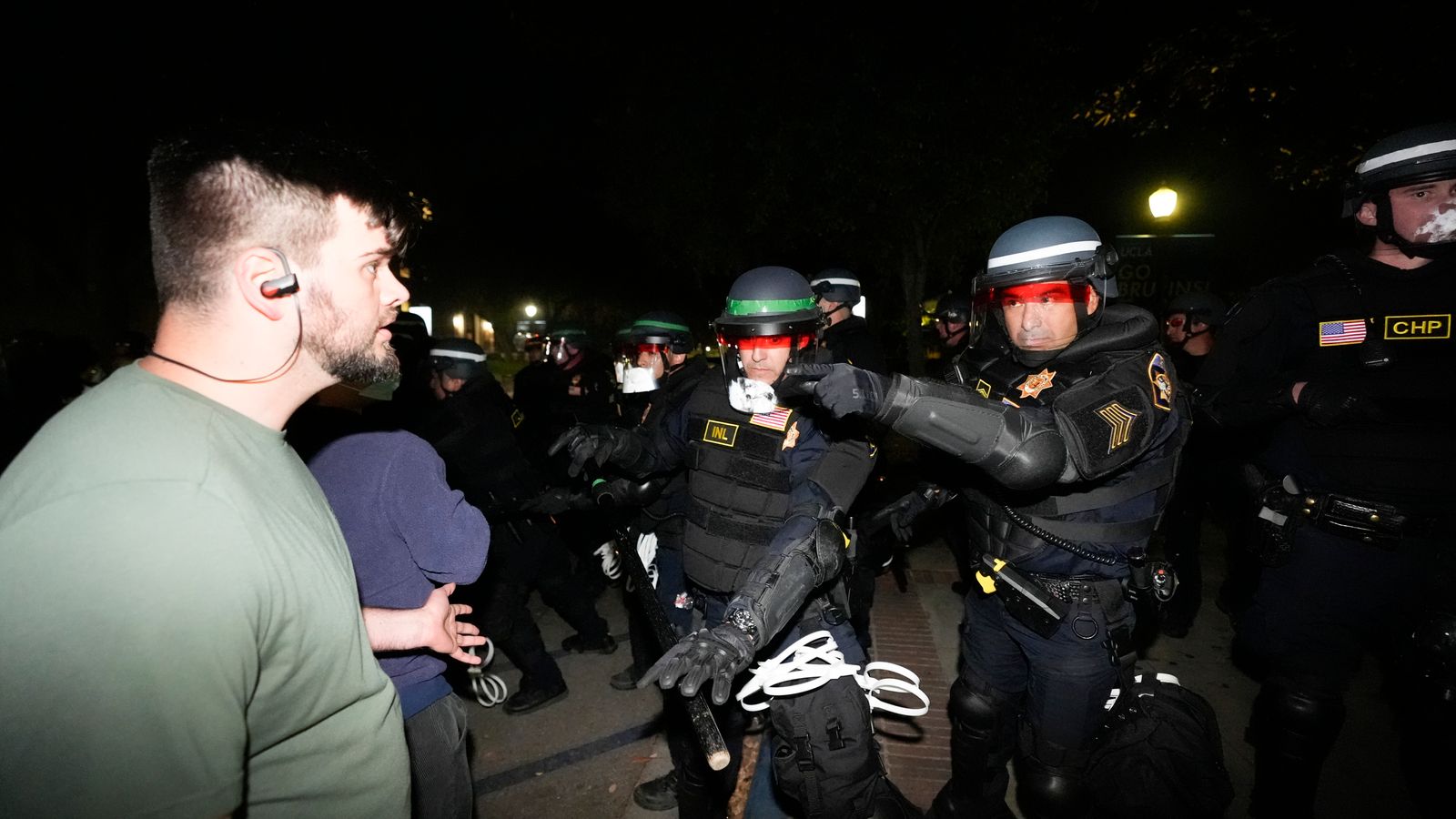
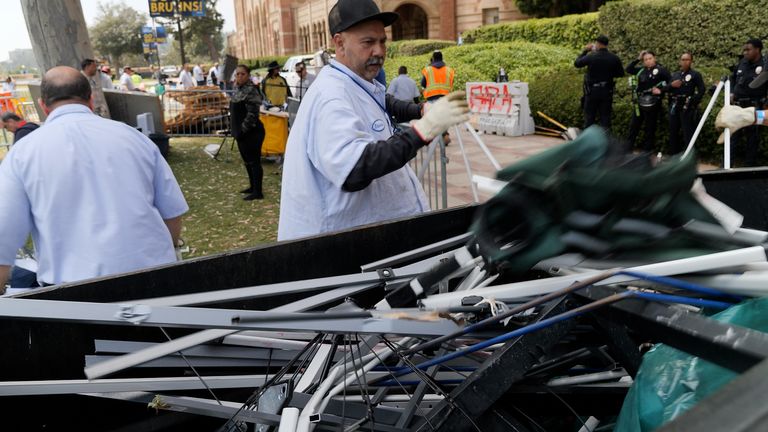
On the grass outside the university library, it is as though it never happened.
The tents have been removed. The pavements have been sprayed. The graffiti removed.
Order and control have been restored. The protest has been silenced. For now at least.
A few streets away, at the university police station, an officer calls the names of the students arrested the night before.
On the steps in front of him, the bedraggled are waiting.
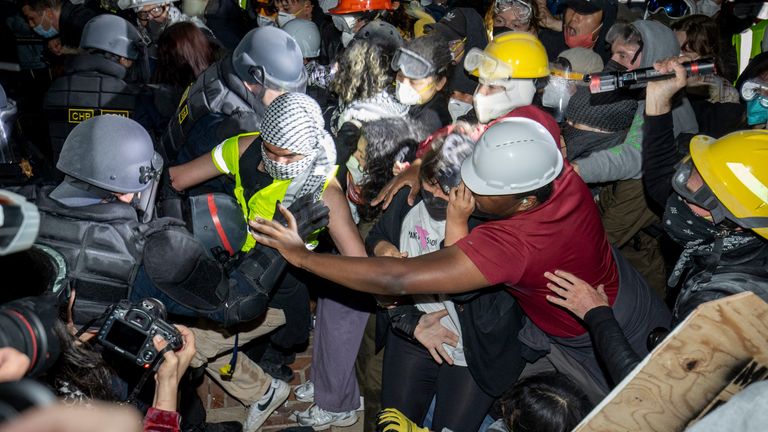
Students, charged and released with a date in court, are here now to collect their belongings. They’re missing bags, belts, shoes, all lost in the chaos of the night before.
From the very heart of the protest encampment, our cameras had captured the chaos.
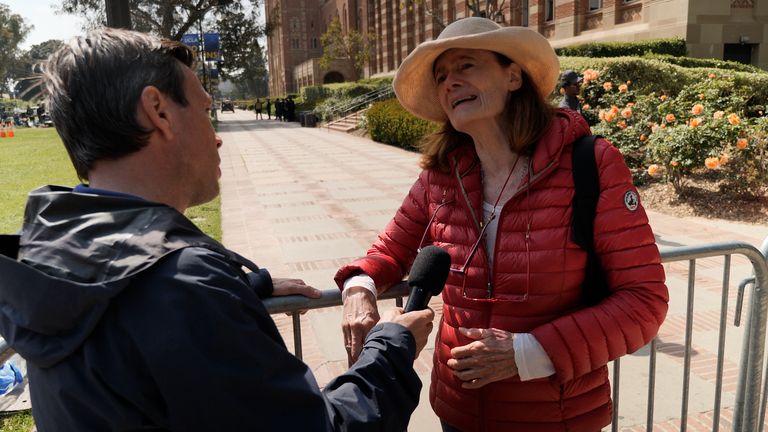
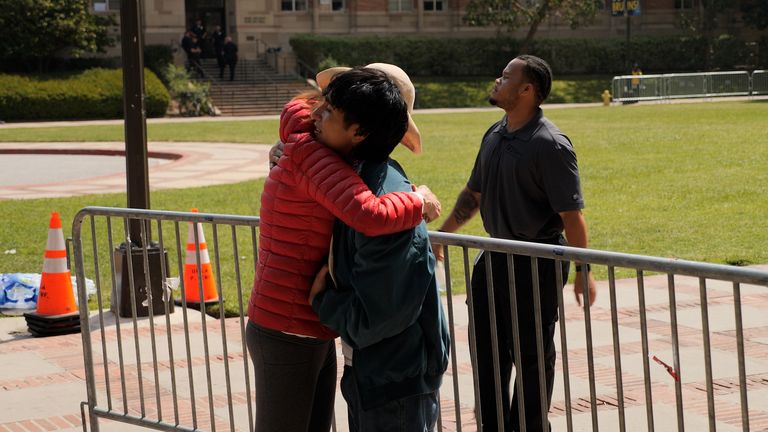
Officers moving in. Tear gas and rubber bullets to disperse. Stun grenades to disorientate.
Advertisement
They were scenes which have stirred an already fevered debate about Israel and Gaza, yes, but about much more too. About America, about policing, and about free speech too.
President Biden said yesterday: “Vandalism, trespassing, breaking windows, shutting down campuses, forcing the cancellation of classes and graduations – none of this is a peaceful protest.”
‘Wrong’ say the protesters. Their movement, they say, is the very essence of protest; of civil disobedience which is threaded through US college campus history.

They reject any notion that they are threatening or violent. Yet the deeply divisive history of the Israel-Palestine conflict ensures that the beholder will so often be offended by the actions of the other side.
It was the students perceived antisemitism through their pro-Palestinian slogans which had drawn a group of pro-Israel protesters to the encampment earlier in the week.
The chaos of that night was reflected in a statement by the university’s student radio station which has been covering every twist.
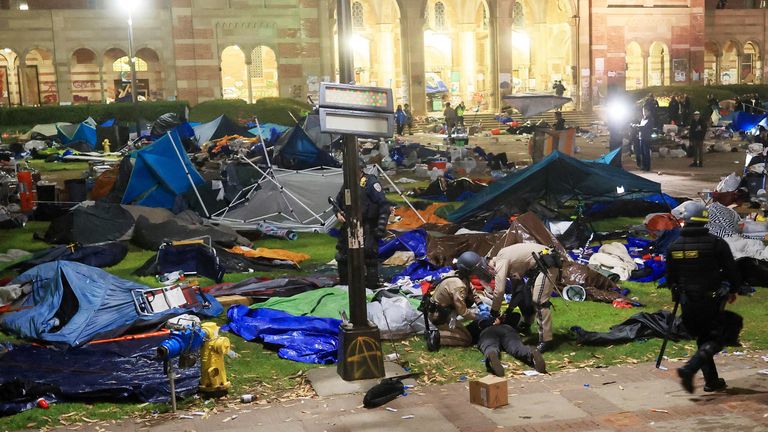
“Counter protestors used bear mace, professional-grade fireworks and clubs to brutalize hundreds of our peers, UCLA turned a blind eye. Police were not called until hours into the onslaught and stood aside for over an hour as counter-protestors enacted racial, physical and chemical violence,” the statement from the UCLA Radio Managerial team said.
Watching the clear-up after the nighttime police sweep of the protesters I spotted two people embracing. A young man and an older woman.
Please use Chrome browser for a more accessible video player
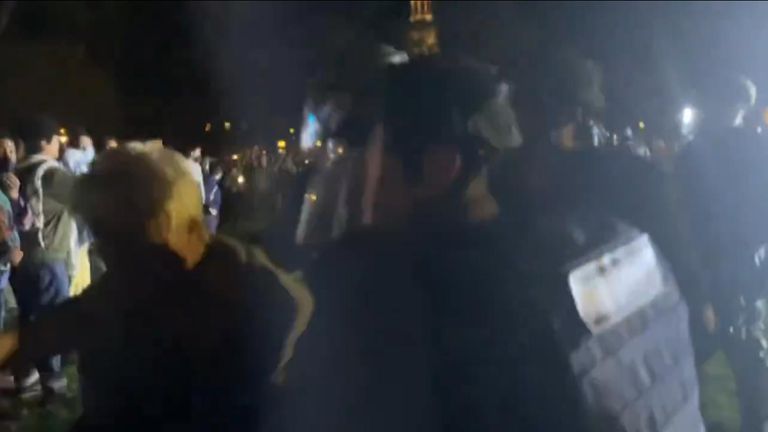
3:17
Professor recalls violent arrest at protest
It turned out to be a thread of history. One was a student who’d been arrested the night before.
The other was a student from a past time. Diane Salinger had been at New York’s Columbia University in 1968, at protests which now form a key chapter in American history.
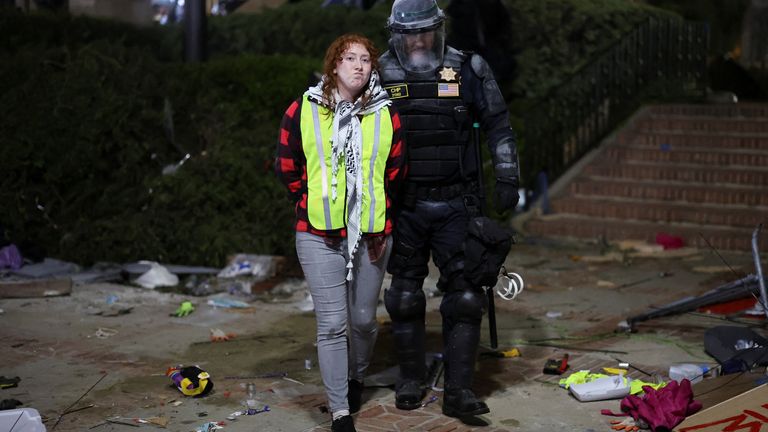
“I’m so proud of these people here. I’m so proud,” she told me.
“You know the civil unrest of the students back in ’68 and it continued for several years, it actually changed the course of the Vietnam War and hopefully this is going to do the same thing.”
But then, back at the police station, a conversation that hints at the wider challenges for America.

Keep up with all the latest news from the UK and around the world by following Sky News
‘Tom’ is a protester who wanted to remain anonymous – a graduate who feels politically deserted in his own country. For him, no government is better than any on offer.
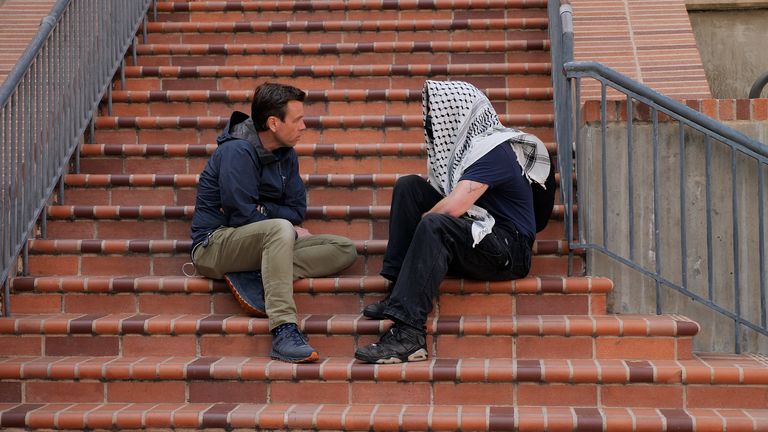
“The problem with our system is that we can’t rely on the police, we can’t rely on the military to keep us safe.
“When we need to make our voices heard, we need to make them heard, and the only way to do that without being repressed is by keeping each other safe and I think that last night and the last few months have really exemplified that,” he told me.
These protests are about more than Gaza. They are aligning a spectrum of dissent.